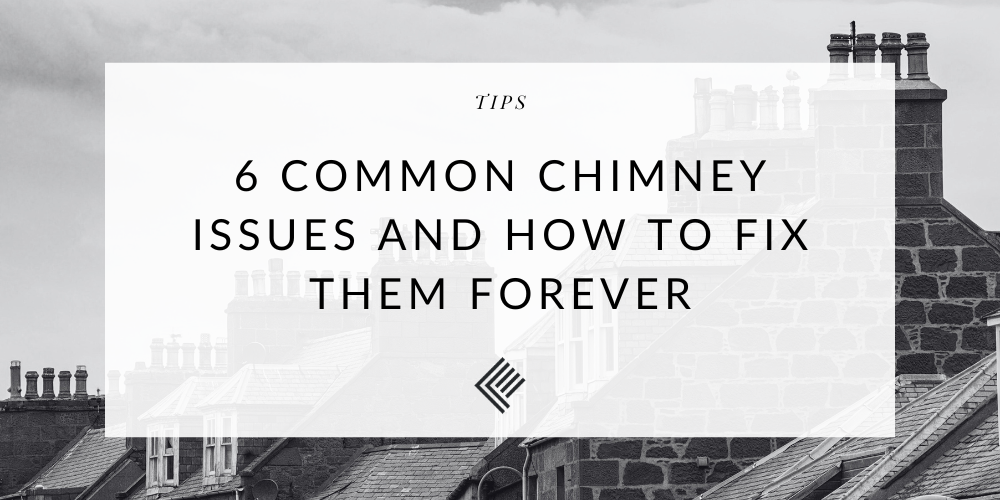
Table of Contents
Having a fireplace of any kind makes your home a warm, welcoming place with enough ambience to keep residents and guests comfortable. Fireplaces come with a lot of wonderful things: crackling flames, a floor of warmth and a reason for the whole family to congregate in one place and spend a little time together. There are a few other things that fireplaces come with that aren’t as nice, like chimney issues.
Like any part of your home that you use often, such as the plumbing or electrical system, you are bound to take a little wear and tear in their lifespan, even if you strictly follow regular fireplace maintenance. There are also problems that may come along with poor manufacturing of parts and incorrect assembly or architecture, which will also need to be seen to in a timely manner to prevent them from getting worse. Whatever the nature of your chimney issues, you’ve come to the right place!
Before we dive into specific chimney issues, let’s briefly review the key components of a chimney:
- Flue: The inner passage through which smoke and gases exit the home
- Damper: A movable plate that controls airflow in the chimney
- Chimney Crown: The top surface of the chimney that helps shed water
- Chimney Cap: A covering that prevents debris and animals from entering the chimney
- Flashing: The seal between the chimney and the roof to prevent leaks

Common Chimney Issues
In addition to regular wear and tear, common chimney issues come in many forms, from the more direct draft and flue issues to the more non-direct chimney issues like water damage deteriorating the masonry, faulty flashing can also causing leaks that may go unnoticed until significant damage has occurred.
Whatever kind of chimney issue you’re facing, we’ve got all the info you need on testing, remedying and finally maintaining and future-proofing your chimney. Let’s take a closer look.
1/ Lack of Updraft
There are two different kinds of draft that will affect your chimney- updraft and downdraft. One is a problem, and the other is a necessity. Updraft is what gets the smoke up your chimney and out the top. If the smoke is seeping back down into your house and there’s no extreme weather at play, one of (or a combination of) the following is one of the likely causes.
Total Blockage
This is a common chimney issue mostly caused by lack of cleaning. Soot often builds up and clogs the chimney, causing the smoke to seep back down into your home, rather than escaping through the chimney. Chunks of debris like slate, bricks or bits of bird’s nest also make their way into chimneys that aren’t cleaned regularly causing blockage chimney issues.
Test: Inspect the chimney with a torch and camera to look for obstructions such as soot buildup, debris, or bird nests. If you cannot get a good view you will need to speak to a local chimney sweep to use their purpose built rods. If their rod cannot pass through the entire flue, a blockage is likely present.
Remedy: Hire a reliable, NACS registered chimney sweep to unblock your chimney and request they clean your chimney on a regular basis. They will also be able to advise you of any structural defects that could pose chimney issues down the line.
Cold Flue
This is a common cause of chimney issues as well, especially if your chimney is uninsulated or exposed. Flue gases will be chilled and cause condensation, not only this, but the cold will reduce draft so severely (hot air rises, but it cannot remain hot if the cold metal cools it down!) that smoke will not go up and out of your chimney. This chimney issue can be unpleasant, but also dangerous for the health of your household.
Test: Light a smoke match at the base of the flue and unsure the smoke is carried upwards. If the smoke lingers, or drifts back into the room, the flue may be too cold to create a proper draft.
Remedy: Leave the damper open unless the wind is extreme, and light a fire lighter or two before starting a fire, to warm the metal flue. If you identify that the lack of insulation is the cause, you may need to replace the pipes with a prefab, insulated system.
Air Starvation
This will cause any wood-burning fire to stutter and often not burn well at all. Airflow is essential for combustion, so a lack of that essential air will lead to a fire too small to keep you and your home warm. This happens more in modern homes than older ones, or in draft-proofed rooms that have solid concrete floors.
Test: When you have a solid fire going, try to open a door or window (preferably when there is no wind to complicate matters). If smoking into the room decreases, the cause of your chimney issues could be air starvation. Another test you can do is by burning some kind of aromatic smoke or incense, this can help you trace air movement in the room, revealing areas where air may be getting trapped or not flowing correctly.
Remedy: Check that the ventilation in the room is in line with regulations to both keep your air quality high and offer the fire enough air to burn well. You may want to consider fitting a ventilator or louvred grill into the room’s door or extra inlets close to the hearth.
Another option is to fit an adjustable throat opening over the flue so that you can adjust the chimney’s “pull” to suit the weather. If these solutions do not help, you may want to consider installing a gas or electric fire in your hearth to simplify things and offer a steady flow of heat.
Fireplace Opening is Too Large
If your fireplace opening is too large in comparison to your flue, you’ll probably end up with a smoky room too.
Test: Compare the size of the fireplace opening to the flue. If the flue size is not equal to at least 15% of the fireplace opening, the opening is too large, which can cause smokiness.
Remedy: Altering the size of the fireplace opening is often far simpler than adjusting the size of the flue, so that will be the simplest solution. If you have a fire grate and wish to keep it, you could try fitting a metal register plate over the underside of the recess. If this is not an option, you may want to consider a free-standing fire inside your existing fireplace.
Flue Offset Too Low, Too Abrupt, or Too Long
If your flue offset is too low or bends too much to accommodate a fireplaces or other construction, the smoke may not be getting pulled out of the chimney. This often happens in apartment buildings or old buildings which have had fireplaces added at a later date.
Test: Hire a registered chimney sweep to use their sweep’s rod and camera to inspect the flue’s route. This will help determine the height of the first bend and the angle of traverse, identifying if the flue offset is too low, too abrupt, or too long.
Remedy: Usually, you’ll need to open up the front or back of the chimney breast and rebuild the problem area. If that is not an option, you may want to consider installing an electric or gas fireplace instead. Do be sure to check for all other potential reasons first, as this is often an expensive and drawn-out process.
Summary
Before diagnosing a lack of updraft, discuss with your chosen chimney professional and explain to them when the problem started and whether there have been any recent changes to the property. Working with them to diagnose issues and keeping on top of regular maintenance and appropriate ventilation adjustments can prevent long term updraft chimney issues.
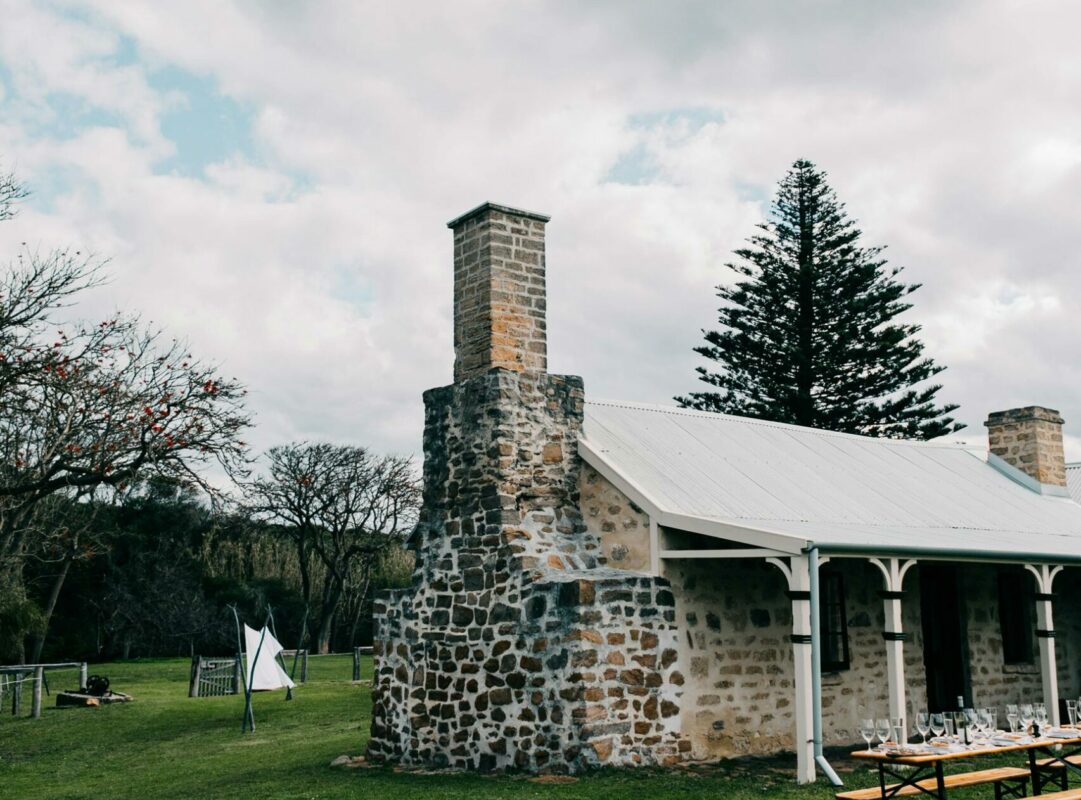
2/ Excess Down Draft
Too much downdraft will cause a different set of chimney issues, and physically push smoke back into your home, which is not only unpleasant but also potentially unsafe.
Excess Air Suction
The suction of air into the room from too many sources of ventilation may be part of the problem causing your chimney issues, especially if these sources of ventilation are located on a low-pressure side of the home.
Test: Conduct an aromatic smoke test in the room. Light a smoke match or incense stick and observe the smoke’s movement. If the smoke drifts towards doors or windows in the room, it indicates excessive air suction causing downdraft issues.
Remedy: Naturally, you can’t just move doors and windows, so you may want to replace the open fireplace with a closed stove-type fire to fix the problem.
Wind Currents
Chimney issues are sometimes caused by weather issues, especially if your home is a few stories high, has a high/ long chimney, or you live in a valley.
Test: Use coloured smoke pellets in your fire and check if the smoke is struggling to escape the chimney or is being blown down onto your house.
Remedy: Add an Anti Down Draught Chimney Cowl over the top of your chimney to shield it from downdraft.
Chimney Clusters
Multiple chimneys in one spot, such as in terraced homes or homes with a number of fireplaces, may force smoke down neighbouring chimneys.
Test: Observe smoke movement when multiple fireplaces are in use. Light fires in neighboring fireplaces and check if smoke from one chimney is being forced down another. If smoke is being redirected into adjacent flues, it indicates a problem with chimney clusters.
Remedy: Raising the level of the chimney that’s becoming choked will be helpful in this situation. Capping old and unused flues may also help minimize smoke coming into your home.
Summary
To resolve common downdraft chimney issues, consider environmental factors such as wind currents and house positioning. Simple remedies like installing a chimney cowl can make a significant difference, but professional advice may be necessary for more complex problems.
3/ Chimney Liner Issues
Chimney liners are designed to help stop chimney issues and protect the masonry from heat and corrosion, and help direct combustion products safely out of the home.
Common liner chimney issues include:
- Cracks or gaps in the liner
- Deterioration due to age or chemical reactions
- Improper sizing
Test: You’re going to need a professional inspection doing by a registered chimney sweep here, a sweep with a camera can reveal liner chimney issues.
Remedy: Depending on the severity, liners may need to be repaired or even replaced. Stainless steel liners are a durable option for many homes.
Creosote Buildup
Creosote is a highly flammable substance that forms when wood burns incompletely. It can accumulate in the chimney and pose a serious fire hazard.
Test: Again, you’re going to need a professional inspection doing by a registered chimney sweep, a sweep with a camera will complete a full visual inspection to identify any creosote buildup.
Remedy: Using seasoned hardwood and maintaining proper burning temperatures will help reduce creosote buildup.
4/ Unfavourable Chimney Location
When homes are built, the direction of things like the sun and prevailing winds are a big consideration. Considering the prevailing wind is especially important if you include a wood-burning fireplace, as wind is needed to create draft and pull the smoke up and out of your chimney.
The wind that blows over the top of the chimney may either help or hinder the draft and cause chimney issues: other buildings, the location of the roof, and things like nearby trees will all factor into how the wind blows around your home. On the windward side of the building, your chimney will be in a high wind pressure area. On the leeward side, it’ll be located in a low wind pressure area.
If there’s a backflow of smoke, not just a steady drift of smoke, into your home- you’re having unfavourable location problems. If you open a door or window on the windward side of your home and the smokiness vanishes, you’ve found your problem.
Test: Observe the chimney’s performance relative to weather conditions. If you notice increased smokiness during specific wind conditions, perform a smoke test by lighting a smoke match and observing the smoke’s behavior in relation to the surrounding structures.
Remedy: You may want to hire someone to extend your chimney beyond the height of the high-pressure area. We advise hiring a local professional rather than doing the work yourself, as there are requirements and regulations which vary by region and must be considered.
5/ Masonry Quality
Water damage is a significant cause of chimney problems. Over time, masonry can be damaged as water seeps into the bricks and mortar, causing them to flake or crack. This not only diminishes the chimney’s lifespan but also its structural integrity.
Test: Visually inspect the chimney’s exterior for signs of water damage such as flaking or cracking bricks. Use a moisture meter to check for elevated moisture levels in the masonry.
Remedy: To address masonry chimney issues, consider hiring a professional for waterproofing services. They can also perform tuck-pointing, which involves replacing old, worn mortar with new, secure mortar. Regular inspections and maintenance can help identify these problems early before they become severe.
6/ Faulty Flashing
Leaks around the chimney are often due to faulty flashing, which can result from either old age or improper installation. Flashing is crucial as it seals the chimney from the exterior elements, preventing moisture from seeping into your home.
Test: During or after a rainstorm, inspect the area around the chimney for signs of leaks or water stains. Use a hose to simulate rain and check for leaks inside the house near the chimney.
Remedy: It’s essential to hire experienced professionals to repair or replace the flashing. Proper installation is key to ensuring it remains effective. If you notice leaks around your chimney, it’s best to act quickly to prevent further damage to your home’s structure.
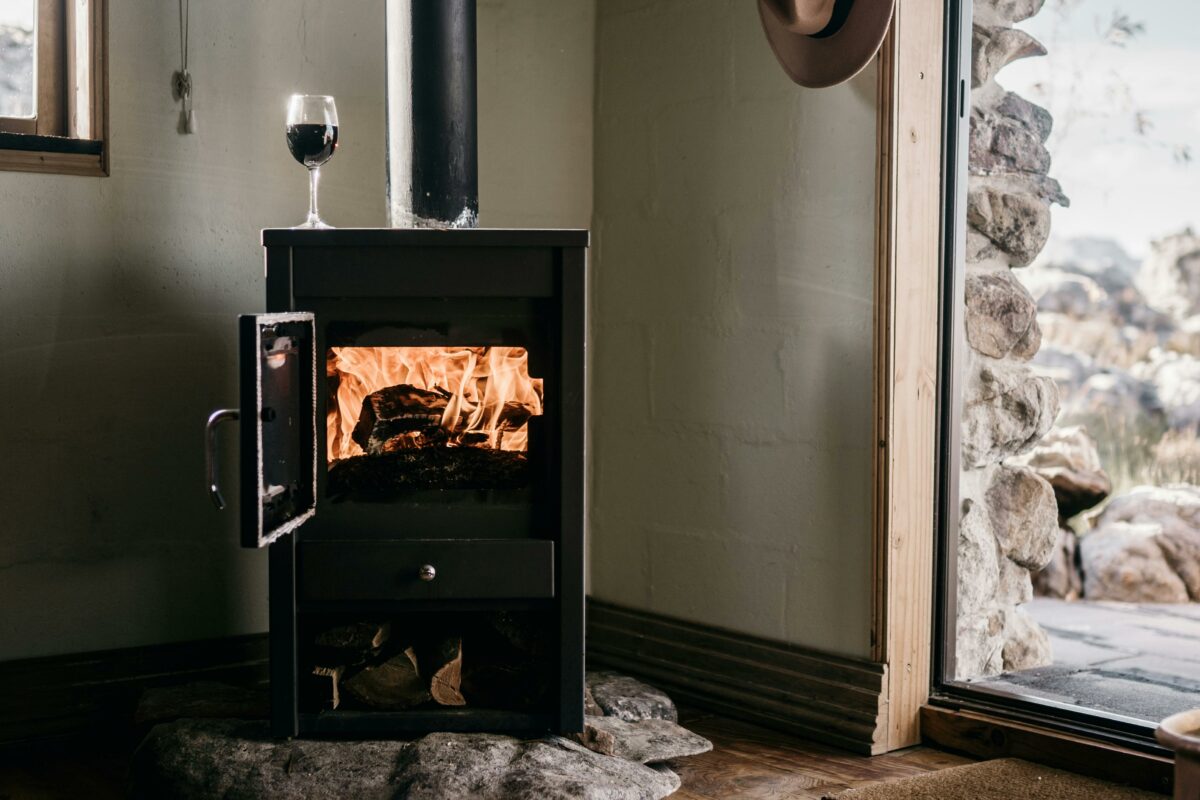
Regular Chimney Maintenance
Regular maintenance and inspections are crucial for preventing common chimney issues and ensuring the longevity and safety of your chimney system. Chimneys are exposed to a variety of elements that can cause wear and tear over time.
Without proper maintenance, these chimney issues can escalate into costly repairs or dangerous situations such as chimney fires or even carbon monoxide poisoning.
A well-maintained fireplace gives less chimney issues, operates more efficiently and safely. Ensuring that your chimney is in good condition helps your fireplace or stove burn fuel more efficiently, providing better heat output and reducing energy costs.
Annual Inspections
Annual chimney inspections are essential for identifying potential chimney issues early. Certified professionals can spot signs of creosote buildup, which is highly flammable and a leading cause of chimney fires. They can also detect blockages caused by debris, bird nests, or other obstructions that can hinder proper ventilation and lead to dangerous gas buildup inside your home. Structural damage, such as cracks in the flue or masonry, can also be identified during these inspections, allowing for timely repairs before the damage worsens.
Routine Cleaning
Scheduling annual chimney sweeps with certified professionals ensures that your chimney is thoroughly cleaned. Creosote and soot are removed, reducing the risk of chimney fires. Regular stove cleaning also helps maintain efficient airflow, improving the performance of your fireplace and ensures that harmful gases like carbon monoxide are safely vented out of your home.
Preventive Measures
Routine maintenance allows professionals to implement preventive measures that can save you from costly repairs down the line. For instance, waterproofing your chimney can prevent water damage to the masonry, and installing a chimney cap can keep out debris and animals.
Professional Expertise
Certified chimney professionals bring expertise and experience to their inspections and maintenance tasks. They follow industry standards and use specialised equipment to conduct thorough inspections and cleanings. By hiring certified professionals, you can have peace of mind knowing that your chimney is being cared for by knowledgeable experts who can address any chimney issues promptly and effectively.
Conclusion
Regular maintenance and inspections are not just recommended but essential for the safe and efficient operation of your chimney. By scheduling annual sweeps and inspections, you can prevent common chimney issues, extend the lifespan of your chimney, and ensure a warm, cozy, and safe home environment. Don’t wait for problems to arise—take proactive steps to maintain your chimney and enjoy the benefits of a well-functioning fireplace or stove all year round.

Final Summary
Understanding and addressing common chimney issues is crucial for maintaining a safe and efficient fireplace. From ensuring proper ventilation and chimney height to regular maintenance and professional inspections, taking proactive steps can prevent many chimney issues.
Keep this guide handy to identify and resolve chimney issues quickly, ensuring a warm and cosy home environment.
Disclaimer
The information provided in this article is intended for general informational purposes only and does not constitute professional advice. Chimney maintenance and repair can be complex and potentially hazardous. For accurate diagnosis and appropriate solutions to chimney issues, it is always recommended to consult with a certified chimney professional. Regular inspections and maintenance by qualified experts are essential to ensure the safety and efficiency of your fireplace and chimney.
If you believe you have a problem with a defective chimney installation, an architectural design error, feasibility requirement or a major commercial flue malfunction we advice you contact NACE. NACE are well placed within the industry to provide expert technical, inspection, investigative and administrative interpretation.

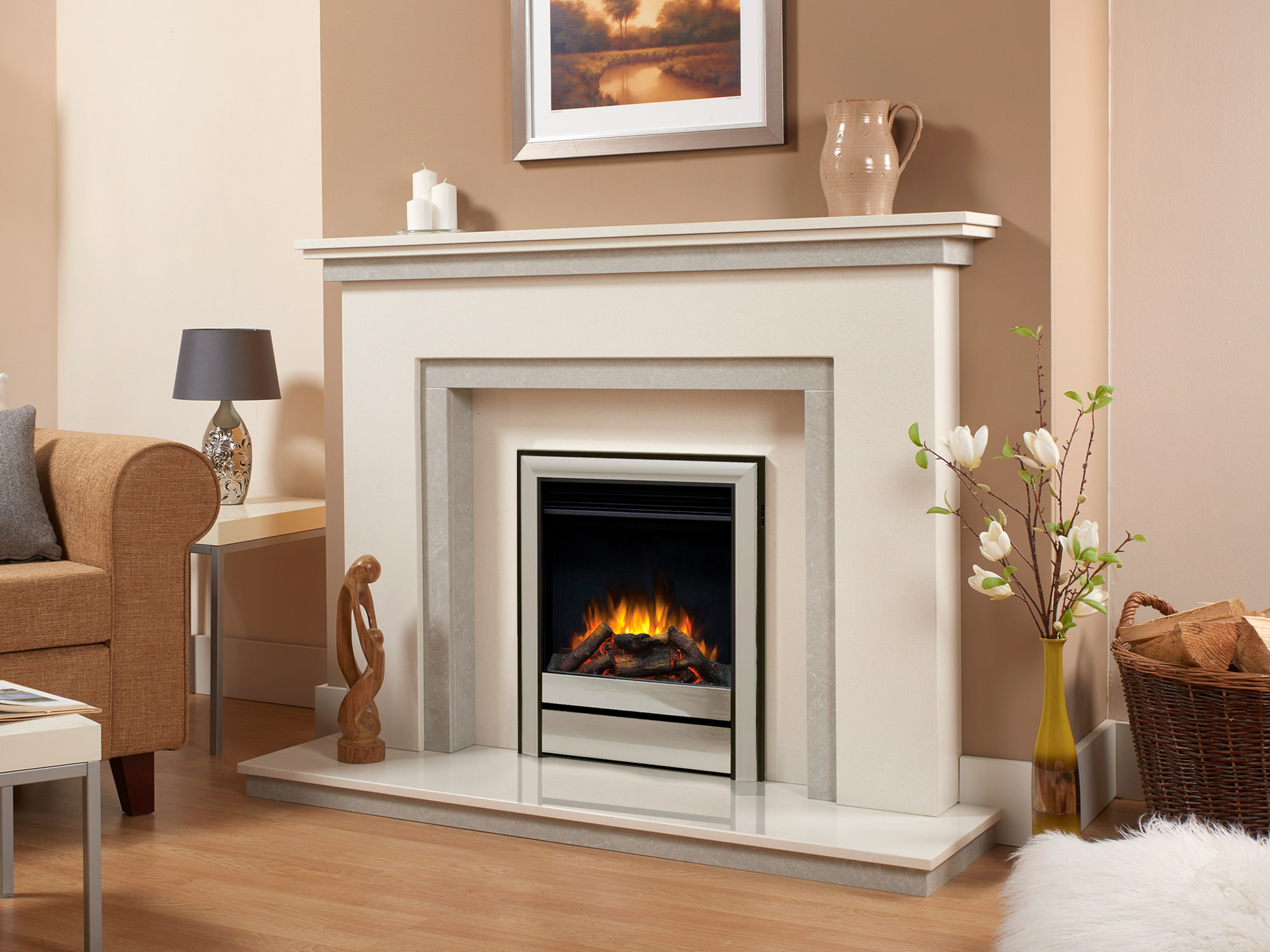
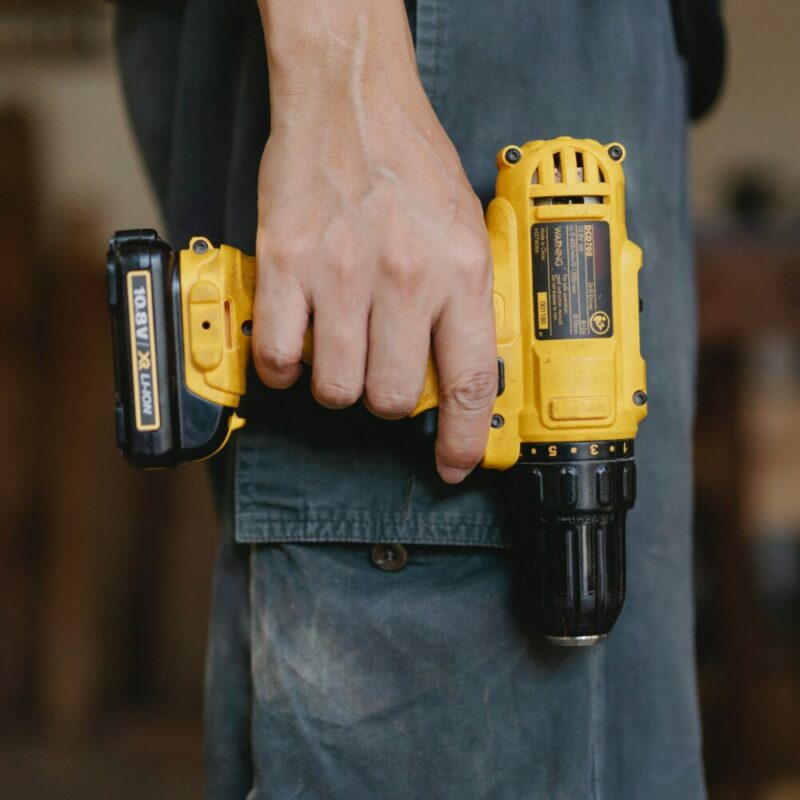
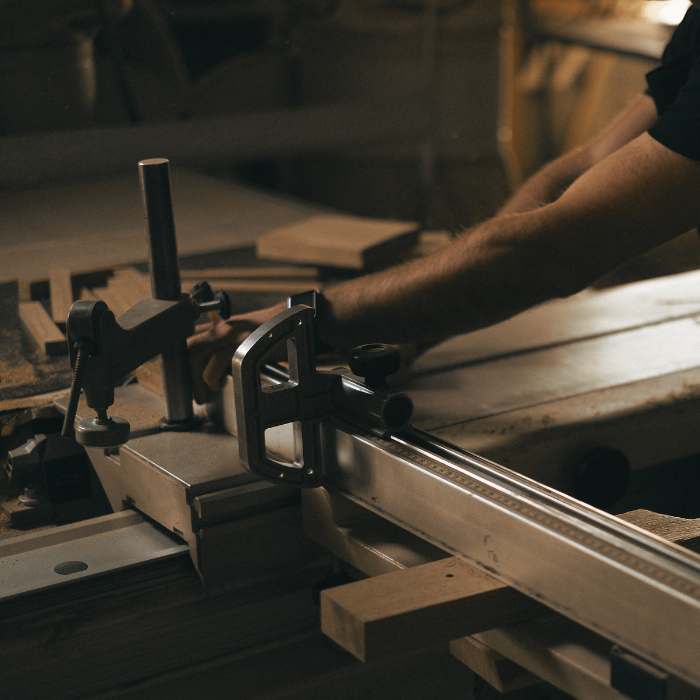

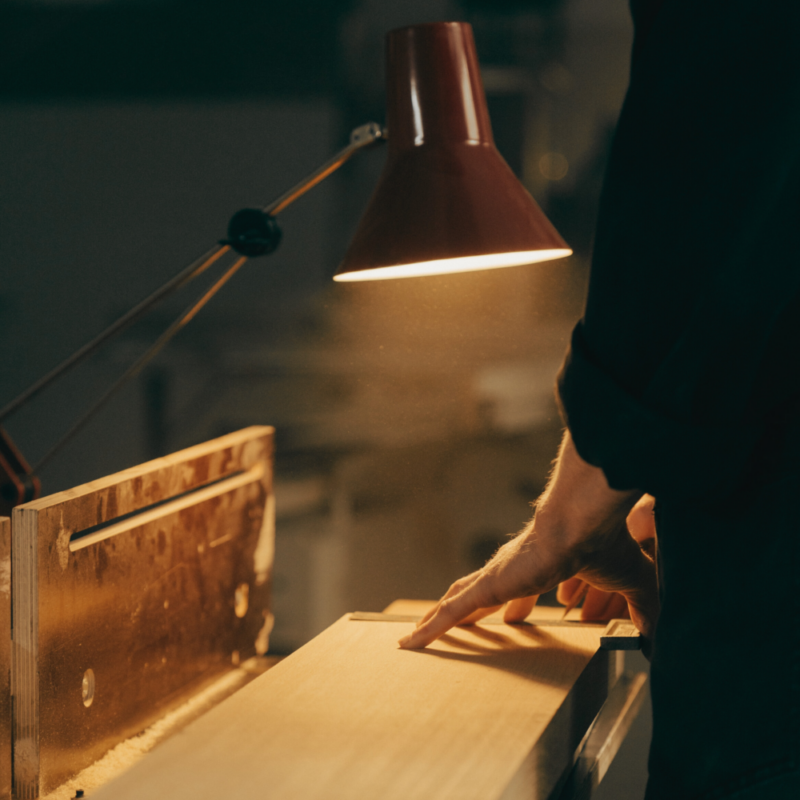






Hello Danny
I’m intrigued by your article.
I have a longstanding damp problem arising from a blocked up chimney in my kitchen presumably from an old range. Small brown patches spread across the room from that corner. Today, we found a vent outside which was full of soil and other matter.
Should the damp be cured by creating a number of vents in the chimney, the chimney emptied and the plaster in the kitchen be removed and replaced by new plaster?
There is a similar problem in the room above.